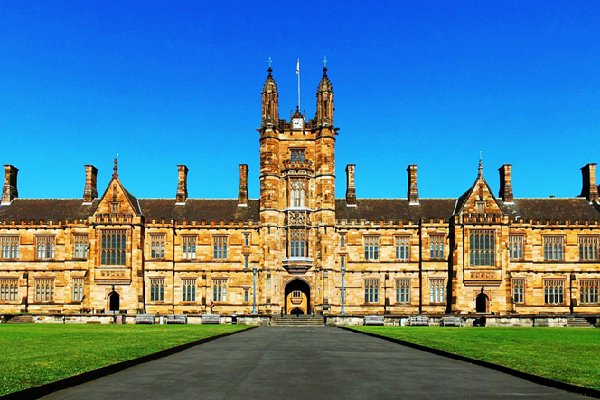
The has recognised the work of five University of Sydney researchers in its annual honorific awards.
The the achievements of the country’s leading minds, including early career researchers and those who have spent a lifetime contributing to science.
Of the 22 recipients in the 2024 awards, the University of Sydney is the proud home for five researchers, four from the Faculty of Science and one from the Faculty of Engineering.
Deputy Vice-Chancellor (Research) Professor Emma Johnston said: “There is rarely a greater honour than being recognised by your peers. We are immensely proud of the five 2024 recipients of honorifics from the Academy of Science. I know our researchers don’t embark on their careers for the recognition, but this acknowledgement pays tribute to the decades of outstanding work they do, day in and day out.”
Academy of Science President Professor Chennupati Jagadish said the awards recognise the diverse contributions of researchers across Australia and the power of long-term commitment to science.
“From climate change to public health, Australian researchers are addressing the challenges our communities face every day,” he said.
“Their dedication to the pursuit of knowledge enriches our understanding of the world around us and sets a great example for generations to come.
“It is a tremendous privilege to be given the opportunity to honour their contributions to science.”
Mawson Medal and Lecture
Dr Adriana Dutkiewicz, Geosciences
has spent the past decade advancing our understanding of deep-sea sedimentation and the long-term carbon cycle, which is the movement of carbon between the solid Earth, atmosphere and oceans. While carbon is the backbone of life, changes to the environment that put carbon dioxide into the atmosphere result in warmer temperatures on Earth.
Dr Dutkiewicz used 50 years of data to develop a digital map of global deep-sea sediments– the first of its kind. She has also led research into the movement of sediments across the seafloor.
She said her team discovered a huge pile of sediment along an 8000-kilometre segment of the South-East Indian Ridge of the Southern Ocean, which had not been known before.
“That area potentially contains a very high-resolution record of Earth’s past climate, but it still remains to be drilled and properly mapped using ships.”
Ian Wark Medal and Lecture
Professor Tony Weiss, Life and Environmental Sciences, Charles Perkins Centre
is the international leader on studies and applications of the human elastic protein needed for resilience and recoil in skin and blood vessels. His scientific innovations have facilitated its commercial translation in one of Australia’s largest healthcare transactions.
Professor Weiss’s scientific leadership has defined tropoelastin’s shape, elucidated how cells respond to tropoelastin through specific molecules called integrins and their binding mechanisms, defined how to modulate self-assembly, and articulated the rules governing this assembly process.
He has created intricate elastic architectures tailored to specific biomedical applications that orchestrate cell growth and enhance tissue repair.
Nancy Millis Medal for Women in Science
Professor Anita Ho-Baillie, Physics and Sydney Nano
The John Hooke Chair of Nanoscience is a pioneer in developing next-generation solar cells which will play an important role in the transition to a carbon-neutral economy. Traditional silicon-based solar cells are inefficient at converting high-energy light into electricity.
Professor Ho-Baillie’s research focuses on multi-junction solar cells, utilising a range of semiconductor materials to absorb different sections of the solar spectrum within a single cell, significantly enhancing energy-conversion efficiency. She has achieved record efficiencies for multi-junction solar cells utilising metal-halide perovskites.
Her recent breakthrough addresses the issue of perovskite cell degradation in heat and humidity. This marks a pivotal step toward durable, commercially viable perovskite cells and solidifies her role in advancing this technology.
Beyond research, Professor Ho-Baillie is deeply committed to inspiring young minds in STEM fields and science communication.
Christopher Heyde Medal
Dr Christopher Lustri, Mathematics & Statistics
It is often impossible to write down exact mathematical expressions to perfectly describe extremely complex natural systems such as the collective behaviour of a colony of ants, gravitational waves generated by orbiting black holes, or the flow of air over an aircraft’s wing. Asymptotic approximation theory can accurately predict how these complicated systems will change and evolve, even when they are far too complicated to solve exactly.
is an expert in developing new asymptotic approximation methods that capture important behaviour that is hidden from widely used classical approximation techniques. Using these new methods, he has resolved open mathematical problems arising in practical scientific settings, such as explaining the shape of waves that form behind submerged obstacles, or the energy loss experienced by pulses in laboratory particle chains.
He discovered that complex discrete systems contain important ‘tipping points’ that were previously unknown. If subtle changes are made to how the system is set up when the system is near one of these points, its behaviour can change dramatically. Dr Lustri’smethods make it possible to accurately capture how systems behave when they are near these tipping points.
John Booker Medal
Associate Professor Lining ‘Arnold’ Ju, Biomedical Engineering
research in biomechanics and mechanobiology has led to crucial discoveries, including how cells use single receptors to sense, read and respond to mechanical cues by converting them into biological messages.
This process helps us understand the mechanical way cells interact with their environment and communicate with each other.
As the first engineer and first University of Sydney recipient of the prestigious Snow Fellowship, he has demonstrated his unwavering commitment to advancing biomechanical engineering. His vision involves creating a tiny device that predicts blood clotting tendency to warn people at risk of heart attacks or strokes, potentially saving lives in Australia and around the world.
Associate Professor Ju’s innovative contributions to biomechanical engineering have the potential to revolutionise diagnostics and surgical tools, ultimately improving countless lives by applying state-of-the-art engineering principles to critical healthcare challenges.
